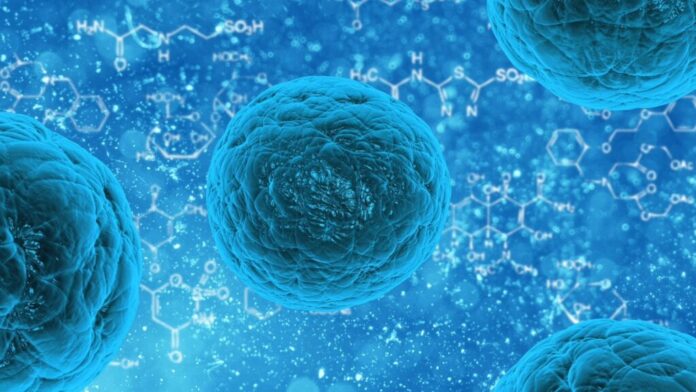The cell isolation market will bring in $15 billion per year by 2025, up from only $6.9 billion in 2020.
It’s clear that cell isolation is a fast-growing sector in today’s health industry. With new research and technological developments driving its growth, the cell isolation industry is a cornerstone of health research.
But what is cell isolation? If you’re wondering that, keep reading. We’ll break down the basics of cell isolation, including what it means, how it’s done, and how scientists use it in their lifesaving research.
What is Cell Isolation?
In their natural environment, many cell types are mixed in tissues. To do specialized research, though, scientists need a homogenous cell sample.
Cell isolation — also known as cell separation — is the process of separating one type of cell from a natural mixture of cells.
What is the Purpose of Cell Isolation?
Heterogeneous cell mixtures make research difficult because different cell types react to experiments in different ways. Isolating one kind of cell for experimentation allows for less interference from other cell types.
That’s why cell isolation is the first step for many research projects, including:
- Testing cells’ reactions to new drugs
- Genetically modifying cells for cell therapy
- Studying and analyzing specific cell types
Cell isolation also has clinical applications. To diagnose and treat a patient, doctors may need to isolate their cells and examine them to understand their disease processes.
Since cell isolation requires expertise and specialized equipment, most researchers don’t perform their own cell isolation. Instead, they purchase pure samples of cells from research-grade suppliers like Cytologics. This assures them that their cell samples are pure and well-tested.
Cell Isolation Parameters
There are many cell isolation methods. Each method gives different results.
To compare the pros and cons of cell isolation techniques, researchers define the benefits that each method has. These parameters let scientists choose the best cell isolation method for their research.
Yield
Yield refers to the overall number of cells that the isolated cell sample contains. A cell separation technique that produces few cells has a low yield. Some research projects need a high volume of cells to experiment on, so they require an isolation method that gives a high yield.
Purity
The purity of a cell sample refers to how few unwanted cells are left in the isolated cell sample. In other words, it defines how successful the process was in isolating the cells that researchers need.
Purity is one of the most important parameters for cell isolation, but it’s often inversely related to the other parameters.
Function
Once isolated, the cell population needs to be useful for research. The cells’ function refers to whether the cells still act like themselves after they have been separated from their natural environment.
A cell isolation method shouldn’t damage cells. If it does, they won’t behave like they do in vitro, which means that research done on them will not be accurate. A high-function cell isolation method keeps cells healthy so that they function as normal during your research.
Cell Isolation Techniques
Cell separation and isolation methods have trade-offs. Some cell isolation methods result in a cell specimen with higher purity but lower overall yield. Conversely, many cell isolation methods that give a higher overall yield also result in a less pure sample.
Scientists continue to invent new cell isolation techniques to get better results for their research. However, several techniques have the best trade-off balances, so they stay popular.
Density Gradient Centrifugation
Density gradient centrifugation is a common cell isolation method. It uses a centrifuge to separate cells according to their densities. The spinning motion of the machine causes cells to separate in layers, with the heaviest cells on the bottom and the lightest ones floating on top.
This cell isolation method is commonly used to separate blood cells from blood plasma. It can also extract dead cells from cell cultures.
Density gradient centrifugation has a lot of benefits. It is low-cost and useful for many laboratories. Many hospitals need to fractionate blood samples in-house, so it’s useful for clinical applications.
However, this cell isolation method has low specificity. Scientists have to carefully extract and wash the cells that the centrifuge has isolated, and even then it’s difficult to obtain a pure sample. The isolation process is labor-intensive and has low output.
Density gradient centrifugation is a good cell isolation technique for in-house laboratory needs. However, because of its low purity and low output, it’s not a good choice for research-grade cell isolation.
Immunomagnetic Cell Separation
In immunomagnetic cell separation, magnetic particles are bound to receptor proteins on the target cells’ surface. Then, the sample is exposed to an electromagnetic field. The cells that have been tagged with magnetic particles are pulled away, leaving other cells behind.
This technique isolates target cells effectively, so it has high purity. It also leaves cells alive for research.
Overall, it’s fast, cost-effective, and easy to perform. These advantages make it one of the most popular cell separation techniques currently available.
Fluorescence-Activated Cell Sorting
Fluorescence-activated cell sorting tags the target cells with fluorophores, which are then activated by lasers. This causes the fluorophores to emit photon signals.
The tagged cells gain an electric charge. When they are passed between deflection plates, the charged particles separate from the uncharged ones.
This cell isolation method is complex and time-consuming. However, it has the highest purity of cell sorting methods. It can even isolate individual cells.
Florescence-activated cell sorting is the best choice for very complex cell sorting, but too expensive and labor-intensive for regular lab use.
The Cutting Edge of Health Research
Cell isolation is on the front lines of today’s health research. From combating cancer to developing new gene therapies, it’s the new frontier of high-tech health.
With this article, you’ll be able to understand what cell isolation is and why it matters to researchers.
Was this article helpful? If so, don’t forget to check out the rest of our blog. You’ll find insights and information on science, technology, health, and much more.












/cdn.vox-cdn.com/uploads/chorus_asset/file/25271820/IMG_1743.jpeg?w=100&resize=100,70&ssl=1)



/cdn.vox-cdn.com/uploads/chorus_asset/file/25535281/247181_AI_Explainer_LEDE_HHerrera.jpg?w=100&resize=100,70&ssl=1)

/cdn.vox-cdn.com/uploads/chorus_asset/file/25271820/IMG_1743.jpeg?w=218&resize=218,150&ssl=1)



/cdn.vox-cdn.com/uploads/chorus_asset/file/25535281/247181_AI_Explainer_LEDE_HHerrera.jpg?w=218&resize=218,150&ssl=1)